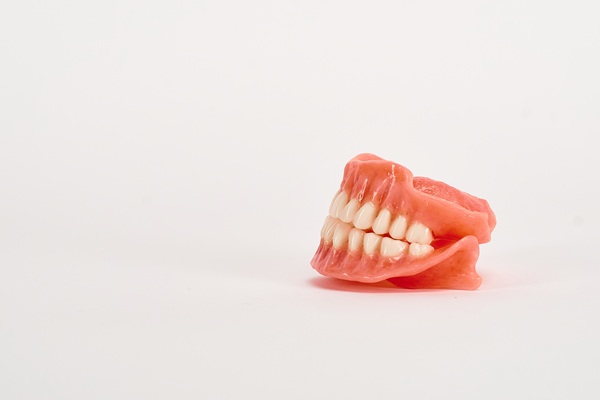How a Family Dentist Can Treat Tooth Decay

One of the many things that a family dentist does is detect and treat tooth decay. According to the Centers for Disease Control and Prevention, more than 90% of adults in the United States have had a cavity at some point in time. Even though this issue is quite common, it does not mean that it cannot also be very serious, especially when left untreated. Tooth decay and cavities usually require prompt treatment from a dentist to prevent complications and to preserve good oral and overall health.
While anyone can develop tooth decay, younger children are especially susceptible to this problem. In children, tooth enamel, the protective coating that shields the inner tissues of the tooth, is often thinner and more easily broken down by acid erosion. Children are also more likely to consume a diet higher in sugar, which can lead to more cavities. It can be difficult for children to clean their teeth effectively. Many children may not receive routine professional dental care because parents wrongfully assume only permanent teeth require cleanings and treatment. All of these factors can increase the risks of tooth decay.
Older adults can also be more likely to develop cavities. As you age, your tooth enamel will weaken over time, making it less resistant to erosion and bacteria. Older teeth are also more susceptible to damage, and the resulting cracks or chips can lead to tooth decay at even faster rates. Decay occurs in stages, and often symptoms do not occur until the later stages. Depending on the severity of the problem, a dentist will treat decay in varying ways.
Stages of tooth decay
There are essentially five stages of decay. The first one occurs when plaque begins to cause the enamel to lose minerals. This area of mineral loss shows up as white spots on the tooth.
The second stage is enamel decay. Further demineralization causes the enamel to break down. This shows up as a brownish color where the white spots were.
Stage three is when the decay penetrates the dentin layer, which is more sensitive to damage than enamel is. This is typically the stage when patients begin to notice symptoms such as tooth pain or sensitivity.
Once it reaches the dentin, the decay spreads quickly. At stage four, the decay penetrates the pulp of the tooth, which houses the blood vessels and nerves.
If left untreated, the bacteria cause an infection in the pulp, which leads to an abscess. This is the fifth stage.
Treatment options for decay
Tooth decay is much easier to treat in the early stages. That is why seeing a family dentist regularly is important.
Prevention and remineralization
During the first two stages, the main focus of treatment is to strengthen the enamel and prevent the decay from worsening. The dentist may recommend brushing more frequently and using products that contain calcium, phosphorus, and fluoride.
Filling
Once stage three is reached, a cavity is formed and there is no turning back. For small cavities, the dentist removes the decayed area and fills it in with a resin material.
Crown
If the cavity is bigger and the decay has interfered with the structure of the tooth, a crown is typically recommended over a filling. This is a cap that fits over the entire tooth. It matches your natural teeth, so it is not visible.
Root canal treatment
Once the decay has reached the pulp, a family dentist will typically perform a root canal. This procedure removes the decayed and damaged material from the innermost part of the tooth. After everything is removed, the dentist places a filling or a crown, depending on the extent of the damage.
Removal of the tooth
If the tooth is abscessed, a root canal may not be sufficient to take care of the problem. If the dentist is unable to save the tooth, he or she will need to extract it to prevent the infection from traveling to the jawbone, neck, and head.
Conclusion
Tooth decay should never be ignored. It could lead to infection, severe tooth damage, and even tooth loss if left untreated. A family dentist can catch the issue before the patient even knows that it is there. Whether caught in the early or late stages, there are multiple treatment options available to stop the spread of decay and infection. Be sure to keep up with routine dental appointments and contact your dentist immediately if you suspect a cavity is forming.
Request an appointment here: https://www.northside-dentalcare.com or call Northside Dental Care, PC at (978) 206-7077 for an appointment in our Peabody office.
Check out what others are saying about our dental services on Yelp: Family Dentist in Peabody, MA.
Recent Posts
Oral health is important to one’s overall health. A family dentist can provide regular dental checkups, teeth cleanings, and restorative and preventive dental treatments. With such a broad range of services, patients tend to have many questions about family dentistry. In this article, we will answer the most frequently asked questions we hear at our…
Children need to develop healthy oral care habits at a young age so they will carry them into their teenage and adult years, and in this review from a family dentist, we discuss several ways that parents can help protect their children's oral health with healthy habits. We also discuss how a family dentist can…
A family dentist is unique in that they treat all age groups. This ensures that you and your family members can go to the same dentist for all your oral care needs, which makes life easy and saves you time and money. In this review, we discuss the benefits of consulting with a family dentist…
You can get specific procedures from your family dentist. This dental care provider knows your dental health history. The relationship you have can make each treatment or checkup easier and more pleasant. Here are the common procedures that you can get from your family dentist.A family dentist can perform this non-invasive treatment. Over-the-counter teeth whitening…


